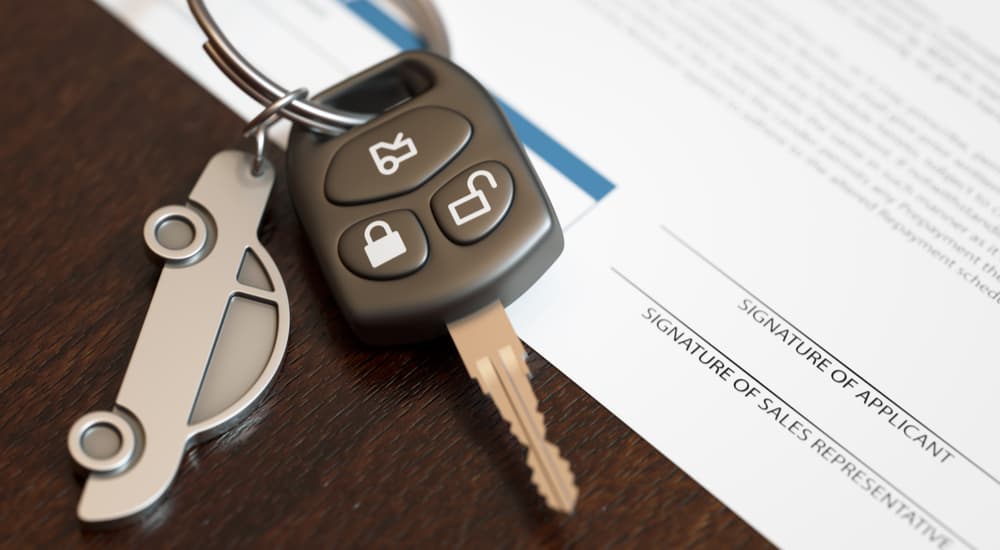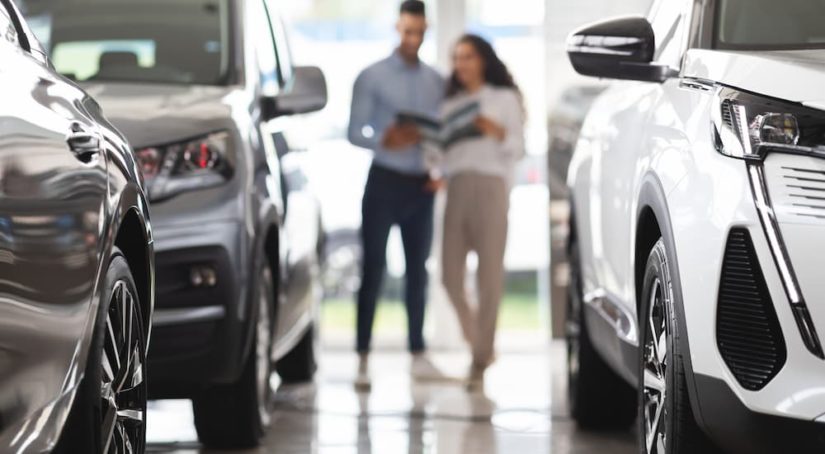If you’re getting ready to purchase a new vehicle, then you’re likely assessing your finances and figuring out how exactly you’ll pay for it. The great news is that you might have one of the best sources of funding right in your driveway: your old car. Dealerships love it when buyers trade in their old vehicles because it helps them keep a constantly updated stock of used vehicles. With used cars being so popular right now, the market is in your favor. Some used cars are particularly in high demand, so when you drive onto a lot hoping to trade in your car, you might have a golden ticket.
How does a dealership determine the trade-in value of your specific car? There can be a lot of information out there about what your vehicle might be worth, but ultimately, dealerships have their own way of arriving at a figure, and it’s different than how any private buyer might do it. It’s even different from how Kelley Blue Book does it. In order to feel confident that you’re getting the best price for your vehicle, it’s important to understand exactly how dealerships calculate trade-in value. Here’s a look into their process.
What the Appraiser Looks At
When you arrive at a dealership with a car that you’d like to trade in, they’ll likely assign you an appraiser from the finance department. This individual will walk around your vehicle, making notes about the outside of it, as well as look inside, making notes about the interior. They might also drive your vehicle to see how it’s running. Their job is to get an overall feel for the exact condition and specs of the vehicle, and will make their offer based upon that.

Year, Make, Model, Trim
One of the first things the dealership will consider is the year, make, model, and trim of your vehicle. They are using this information to know what the car originally went for in the showroom when it was brand new and how much its value has dropped since then. Now, just because a car is old doesn’t mean you’re at a disadvantage. Remember that certain models from specific years may no longer be in production, which could make them rare and in high demand. Sometimes, a car from the year 2007 is just an old car, but sometimes it’s a rare gem that’s hard to find these days.
Overall Condition
The appraiser is looking at the overall condition of the car. They’re looking for things like dents, scratches, damage to the upholstery or carpets, stains, and other cosmetic issues. They’re also looking at how much wear is on the tires, as well as for any chips or cracks in the glass of the vehicle. The appraiser will also check to see if all the infotainment and other systems inside the car work. These include things like the climate controls, the volume buttons and speakers on the sound system, and the navigation system. It also includes door handles, window controls, and more practical features.
Remember that the dealership will need to pay to have all of these issues fixed before they can put the vehicle up for sale. So when they are determining a value for your car, they might first calculate a value for it in excellent condition and then start deducting from that based on what they’ll have to pay to fix it and make it ready to sell again. You’ll have to consider whether you want the dealership to fix these issues or if you want to get them fixed before trading in. Remember that the dealership can usually have these issues fixed at a deeply discounted price because they have a repair and service department that can get parts for cheap. In most cases, going to an outside body shop will mean paying more than what the dealership would have deducted from the value of your car. So unless you know of an auto body shop that is willing to give you a serious discount on work done, it’s probably best to trade in as is.
Checking the Vehicle History
The appraiser will likely run a vehicle history check on your car through a service like CARFAX or similar. This will let them know if the car has been in any accidents, what it’s been used for, and other factors that could influence the value of the vehicle.
Total Mileage
Mileage is always a large determining factor of the value of a car, simply because most cars only have so many miles they can go before running into issues. Generally speaking, the lower the mileage, the higher the value. However, some cars are known to run for substantially more miles than others without issue. Your appraiser should be aware of that, and that will factor into your vehicle’s value.
The Popularity of the Car
Sometimes you catch lightning in a bottle and are trading in a car that’s incredibly popular right now. For example, during the pandemic, with people going on more outdoor excursions to escape quarantine, recreational and utility vehicles like trucks became hot commodities. Sometimes drivers get a touch of nostalgia and are all looking for a classic station wagon or a particular year’s make of a convertible. The consumer market for vehicles is unpredictable and can surprise you. The popularity of vehicles fluctuates, so this isn’t a factor you can necessarily plan for, but definitely take advantage of it if you have a car to trade in that is currently popular.

Used Car Inventory in the Area
The particular location where you’re hoping to trade in your vehicle can also influence the value. Sometimes, for some reason, one region will face a major shortage of a certain type of car. If that’s the type of car you have, you could see a high trade-in value for it. Likewise, dealerships in your area could be overflowing with cars just like yours, which would reduce its value. If you find that to be the case, it’s worth it to do some research and discover if there are any other drivable regions facing a shortage of your vehicle type. It might be worth it to travel there to get a higher price for your vehicle.
Will It Be Retail or Wholesale
The dealership might be deciding between putting your car up for retail, right there on their lot next to the used cars, or selling it wholesale. Selling it wholesale means they won’t fix anything about it and sell it as is, likely to an auction house or another dealership. If they decide to go that route, they won’t need to deduct any cost for repairs, but it could also mean that your car had a lower value, to begin with. If they are planning on selling it at retail value, then they’ll factor in the things they have to do to prepare it for their lot, and the cost of those services will be deducted from the value of the vehicle.
A Lot of Factors to Consider
As you can see, a lot goes into determining the value of your trade-in vehicle. Knowing about each of these factors will help you better prepare for what you’ll hear at the appraisal and help you better get financially organized for the purchase of your next vehicle. Don’t let sites like Kelley Blue Book trick you into thinking you will get a higher value for your vehicle because they don’t consider factors like current condition and market demands. Know what the dealership is going to look at and what they are realistically going to offer you, and you can make your financial transition to a new vehicle much easier.



